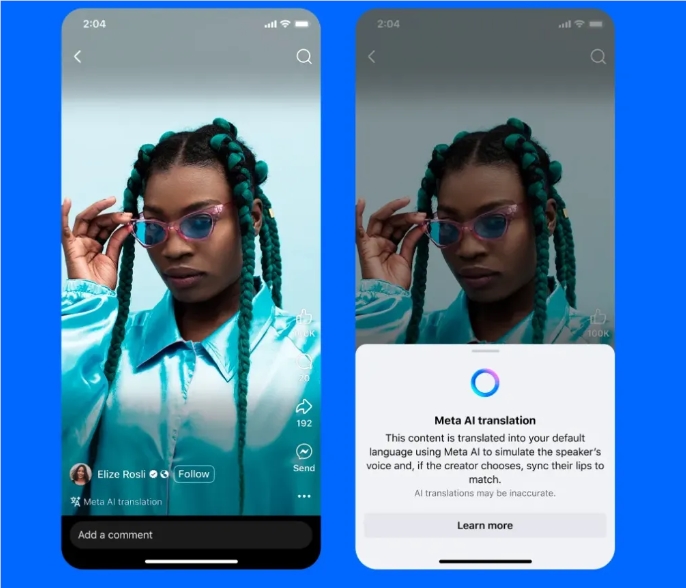Meta recently announced that it will globally launch an AI voice translation feature on Facebook and Instagram, aimed at helping creators translate their content into other languages so that a wider audience can enjoy it. This new feature is currently available in markets where Meta AI is accessible.
This feature was first mentioned at last year's Meta Connect developer conference, where the company said it would conduct pilot testing, automatically translating the voices of creators in short videos. Meta emphasized that this AI translation technology will use the creators' own voice characteristics to make the dubbed audio sound more authentic. Additionally, creators can choose to use the lip-syncing feature to better align the translation with their mouth movements, enhancing the natural feel.

When activated, the feature supports bidirectional translation between English and Spanish, with more languages to be added in the future. Eligible Facebook creators (with over 1,000 followers) and all public Instagram accounts can use this feature. Creators just need to click the "Translate Your Voice with Meta AI" option before posting a short video to enable the translation and choose whether to include the lip-syncing feature. When they click "Share Now" to post the video, the translation will be automatically available.
Before posting, creators can view the translation and lip-syncing effect and can turn off these options at any time. It is worth noting that rejecting the translation will not affect the original video's release. Viewers watching the translated video will see a Meta AI translation prompt at the bottom of the screen, while users who do not want to see specific language translations can disable this feature in their settings.
Meta has also added a new metric to creators' insight panels, allowing them to view the number of views by language. This will help creators better understand how their content reaches new audiences through translation, which is especially important when more languages are supported in the future.
Additionally, Facebook creators can upload up to 20 of their own voice tracks in short videos to expand their audience to non-English or non-Spanish speaking markets. This feature can be found in the "Close Caption and Translation" section of the Meta Business Suite and supports adding translations before or after publishing, which is different from the AI translation feature.
Meta stated that it will support more languages in the future but did not specify which languages or when they will be launched. Adam Mosley, head of Instagram, said on social media that Meta hopes to help creators reach potential audiences who speak different languages, thereby overcoming cultural and language barriers and helping them grow their fan base and gain more value on Instagram.
Key Points:
🌍 Meta launches an AI voice translation feature to help global creators expand their audience.
🎤 Currently supports translation between English and Spanish, with more languages to be added in the future.
📊 Creators can view watch counts by language in their insight panel to understand where their new audience is coming from.
